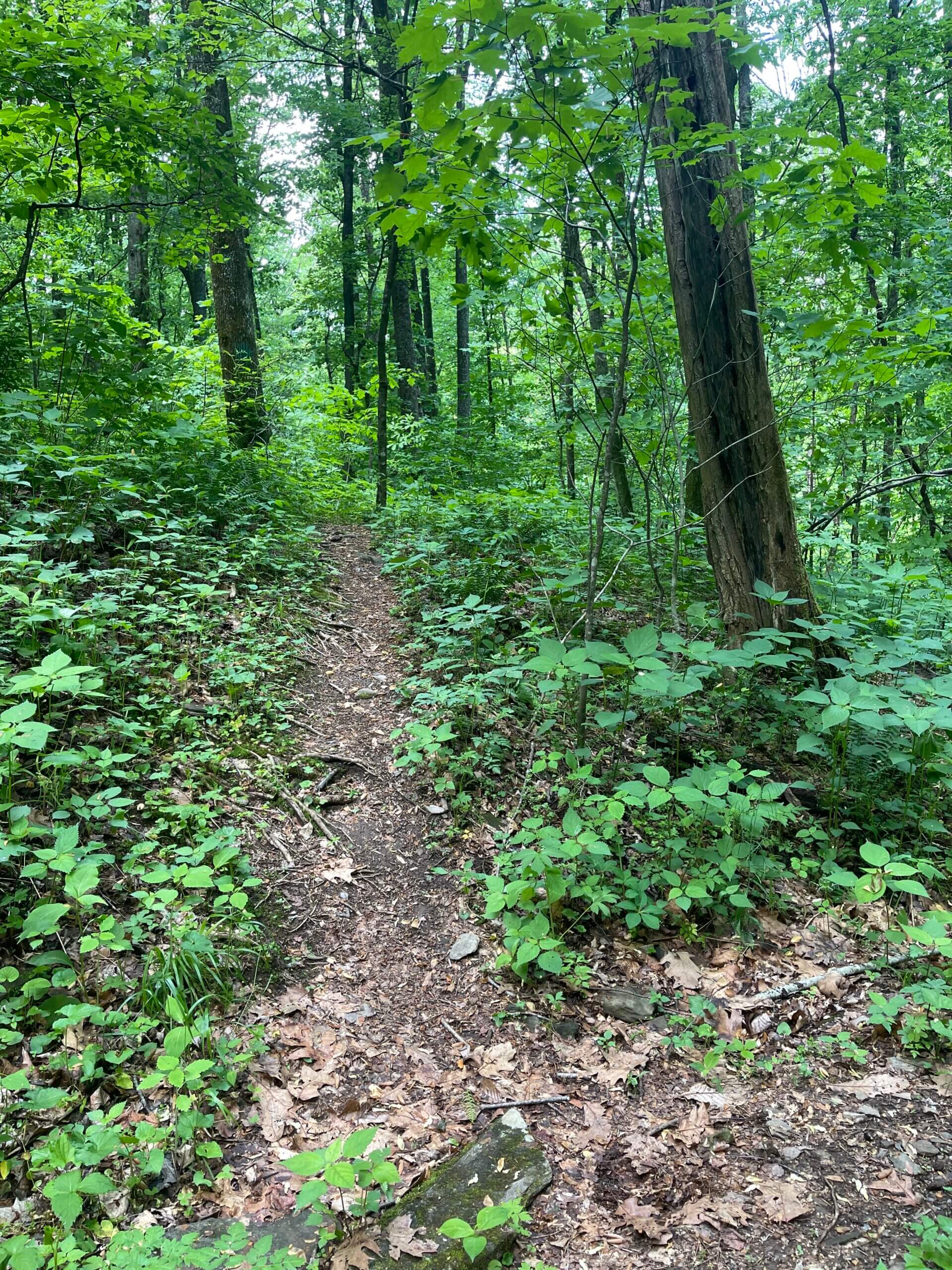If you’re ready to next-level your fiddle playing in bluegrass and other fiddle styles- whether you’re a classical violinist looking to pick up fiddle styles or an experienced fiddler looking to add creativity and sophistication- the tips below will point you in the direction of mastering the basics, creating your own backups, improvising breaks (aka solos), and gaining confidence and a good understanding of when, how, and what to practice. I hope you’ll agree that at least some of these resources are a great find.
Whether you aspire to the playing of bluegrass fiddle legends like Vassar Clements, Bronwyn Keith Hynes, Old time fiddlers like Brittany Haas and Bruce Molsky, Celtic players like Jeremy Kittel, Balkan, Klezmer, Jazz, let’s address:
- Fiddle Bow(right hand) and left hand technique
- Understanding and applying harmony
- Improvising or making your own breaks
- How to accompany and join the band
- How to get more fiddle “flavor” and sound less classical
- Much more.
- Let’s get started. We’ll cover common beginner challenges and things advanced players may not know.
A Little About Me, Christian Howes
I’m most widely known as a classically trained Jazz violinist, but I play and teach various fiddle styles and rock, R&B, Blues, Latin, and more.
Some fiddle players who have credited my teaching as an influence include Alex Hargreaves (Billy Strings), Mike Barnett (Ricky Skaggs), Jeremy Kittel (Kittel and Co.), Aubrey Haney (possibly the most in-demand Nashville session fiddler of the past 20 years), Andrea Whitt (Shania Twain), and many more.
Many Adult hobbyist “purist” fiddlers, as well as classical violinists looking to adapt their playing to the fiddle, have studied or currently use my training via Zoom classes, home study, or retreats.
I help fiddlers and violinists learn to be “functional” musicians across various styles. Functional musicianship includes the ability to develop rhythms and melodies of your own and “join the band” by accompanying, writing your own parts, and improvising appropriate to the style while playing in your own voice, whether Bluegrass, country, jam band, blues, rock, pop, etc.
Now, here are some resources to improve as a fiddler, regardless of whether you come from a classical or fiddle background.
Pitfalls that classical violinists encounter when learning to play fiddle:
Different Bowing Techniques for Fiddle vs Classical Violin:
- Use less bow
- Keep the bow on the string vs lifting off.
- In some cases- Change the bow less often. Use more slurs and hook bows.
- Sometimes, you should get into the habit of improvising the bow.
- Bite with the bow to mark the start of notes.
Chopping and other extended bow techniques.
For chopping and other extended bowing techniques, be prepared to use muscles in the right arm that are different from what you normally would use. Don’t obsess about chopping now because it can distract you. I recommend saving these detailed “technical” things for later and instead focusing on playing in time, with a clean tone, and delving into chords and improvisation.
The Authenticity of Different Fiddle Styles:
Fiddle music covers a wide range of musical styles, each with its own unique rhythms, melodies, and ornamentation. Classical violinists may need to familiarize themselves by listening a lot, both on recordings and especially in a live room.
Tone and intonation:
Fiddle music often benefits from different tone colors than classical music. Classical violinists may want to adjust their tone production and use of vibrato. Don’t be afraid to try a different tone and different vibrato. The world will not break. It can help your classical playing to shake things up.
Allow time for your left hand to grow accustomed to playing different double-stop shapes and melodic patterns. Just because a left-hand shape is unfamiliar doesn’t make it more difficult. Over time these unfamiliar shapes such as double stops and fiddle licks will get easier to play and hear.
Different performance expectations:
Classical music is typically presented more formally than fiddle music, often played in a more relaxed and spontaneous setting.
Classical violinists may need to adjust to the more improvisatory nature of fiddle music. There are a few ways to do this, especially when you structure the practice.
Improvisation in Fiddle Styles
- Improvise out of a major scale
- Improvise out of a pentatonic scale
- Improvise accompanimental patterns
- Improvise Bowings
- Improvise micro variations on Melodie’s
- Improvise using voice-led chord tones
A common mistake is to try improvising over material that is too advanced or too long. Whether you want to feel confident improvising over simple tunes or complex melodies, I recommend practicing improvising Elemental Structures. My free improvisation course provides a context for improvising elemental structures, and my guided practice sessions explain how to apply these to other songs and styles.
Think about learning how to accompany others on tunes, which requires learning and remembering the chord progressions to tunes and some basic rhythmic vocabulary for bowing hand.
Different equipment: Classical violinists may need to adjust their setup to lighter tension strings or switch to a different instrument if playing outside in the air. You’ll also want to consider amplifying (link).
The key to overcoming these pitfalls is how you practice. Classical violinists can learn to play fiddle successfully by focusing their practice away from the same old classical etudes and towards playing fiddle tunes. And, get exposure to various fiddle music- again, preferably being in the room with fiddle players as opposed to just through recordings.
Fiddle Technique Fundamentals
The first step to becoming a skilled bluegrass fiddle player is to master the fundamentals, which include bowing techniques and sound production.
Fiddle Bowing Technique, Incorporating Improvisation in Accompaniment
To work on your bowing, make your bow stroke even and smooth, use less bow, relax, and play soft to start.
Play variations of “Run Pony” ( a quartet note followed by two 8th notes). Incorporate more complex bowing patterns as you progress.
Here is a Play-Along Video Lesson you can learn with below.
You might be tempted to think this is too easy or boring, but the trick is making “easy” things feel good. Also, practicing improvisation on something like the rhythm of your bow stroke is excellent practice for improvising more complicated melodic lines later. This is, in a way, like using elemental forms.
Vibrato in FIddle Music
You can use a variety of special effects and tonal techniques to add interest and variety to your playing. Vibrato involves adding a subtle wavering effect to your notes.
Within Vibrato are two main parameters, i.e. amplitude (the width of the vibrato) and speed (how many vibrations per second).
Bluegrass fiddle players generally use a wide amplitude and slow speed, while classical players tend to use fast speed with either a wide or narrow amplitude of vibrato.
If you’re a classical player switching to fiddle, using less vibrato is a good place to start. However, there’s more to it than this.
Fiddle Intonation
Focus on keeping your left-hand fingers loose. I like to think of this type of intonation as keeping the fingers in a state of “always moving/adjusting”. This means that instead of worrying about putting your finger in the right place, you can always listen and move your fingers as needed. (intonation video here). It may take some time to get the hang of it, but with practice, you can play all sorts of melodies and chord progressions.
Sounding Like An Authentic Fiddler
If you want ONE thing to focus on (above “sounding authentic” or “the right ornaments” or “hot fiddle licks”, focus on rhythm and timing. Bluegrass music is all about groove and energy, so developing a strong sense of timing and feel is essential. Practice with a metronome or backing tracks, and listen to recordings of great bluegrass fiddle players to get a sense of where their time falls, i.e. ahead, behind, or in the center of the beat. Notice how much swing is in their 8th notes.
Check your Bow Hold
Fiddle Phrasing and Dynamics
Phrasing is an essential element of bluegrass fiddle playing that refers to how you shape and structure your improvised melodies. In contrast, dynamics refer to the volume and intensity of your playing. Together, these elements help add emotion and expression to your playing.
Practice melodies and solos with different shapes and rhythms to improve your phrasing. Experiment with long, flowing lines and short, choppy phrases, and pay attention to how you shape your notes. Dynamics can be achieved through your bowing technique, i.e., the speed and weight of the bow. Slow tunes down to practice playing with different levels of intensity and dynamics. Always record and listen back to yourself.
Advanced fiddle techniques:
Once you have the fundamentals down, it’s time to explore more advanced techniques and styles.
Improvising and Soloing
It’s time to step out of your comfort zone and dive into the world of improvising and soloing! Trust me, I know it can be intimidating the first time you go beyond playing prescribed melodies. But with some practice and the right method or approach, you’ll find that it’s an incredibly fun and rewarding way to express yourself through your playing.
So how do you get started? It’s not always as simple as grabbing your fiddle and jamming with some backing tracks or other musicians, especially because some tunes are more challenging to play than others.
Although you don’t need to be afraid to take risks and try out new ideas, you will greatly benefit from discerning the unique problems of specific tunes and learning the chord progressions, scales, and melodic rhythms commonly used in bluegrass and other traditional music. These will provide a solid foundation for your solos. You can also use a process called micro-improvisation, based on making very small changes to the melody. Let’s get into it.
Chord Tone-Based Approach to Soloing
Chord tones are the most essential “safe” notes to play, and most melodies are primarily constructed using chord tones (at least on strong beats). The trick is to learn the chord tones deeply to go beyond memorizing a few quick chords to find available shapes in any key. If you do not read music, you can make a good start by ear. If you have a basic reading ability, internalizing chords can be done with a simple visual aid to accelerate the process. The best way to do this is via a course called Easy Tonal Improvisation, which gives you an easy way to map out and access chord tones.
Unlocking The Secrets Of Fiddle Harmony: How To Add Harmonic Interest To Your Playing
Fiddle music is often characterized by rich harmonies. One way to add harmonic interest to your violin playing is by using double-stops (playing two notes simultaneously). Additionally, try to learn different chord voicings and progressions. Also, examine reharmonizations of tunes. This may require going deeper into jazz harmony. (link to jazz violin post) When you grow your understanding of harmony, you can add depth and interest to your fiddle playing.
Scale-based approach to soloing- Some songs allow for more of a scale-based approach. The trick is knowing when and where to use a scale-based approach vs a chord-tone-based approach. Eventually, they are blended. This video gives an example of using the magic bluegrass scale (which is a variation of the pentatonic scale) in the song June Apple. Watch it to get on the right track for scale based playing that sounds appropriate in a Bluegrass style.
Again remember, that this approach works on the tune June Apple, but not all tunes are exactly the same as June Apple. Having said this, this approach will help you play in other tunes (or parts of tunes) that have similarities to June Apple both in rhythm and harmony. The video here is a collaboration with my friend Justin Branum (link to homepage), a member of the grand Ole’ Opry staff band and widely respected Bluegrass teacher and player.
Songs that sit on one chord for a long time, or use certain combinations of chords, like June Apple, are sometimes described as “modal”. This means that you can get away with an approach of using one scale (or mode) on these tunes more easily than other tunes. Other tunes may require modulating to different scales, they may benefit from a chord tone based approach, or a micro-improvisational approach.
(For help with internalizing scales and knowing when to use a scale-based approach, consider setting up a lesson.)
Micro-Improvisation a melody-based approach to soloing or taking breaks
Micro-Improvisation is a term I first heard from luminary musician and music educator Matt Glaser. Matt was my boss for a few years when I taught at Berklee College of Music. He founded the American Roots Program at Berklee, and he is a wealth of information.
Matt made the point that when you listen to great fiddlers, you might hear them play the same melody 20 different ways without ever playing it exactly the same. This can apply to the same section of a song, or even a repeated lick that lasts 2 bars.
How to practice micro-improvisation:
- Choose a VERY SMALL amount of melodic material (such as 1 or 2 bars)
- Slow it WAY DOWN
- Practice playing this section 10-20 times, while making only a micro variation. A micro variation could be changing 1-3 notes, adding 1-3 notes, subtracting 1-3 notes, or changing 1-3 RHYTHMS.
- Do the same with the next 1-2 bar section.
- Put the two sections together
- Rinse and repeat.
With consistent practice, you can do this over longer forms and whole tunes.
Here is an example of a Play Along Bluegrass Video you can play along to:
Here’s a more difficult one:
Find more free play along fiddle tunes here. Find 500 free play along videos in many styles and get our directory here.
Different bluegrass fiddle styles and their characteristics
With listening you will notice different styles of individual players between one style/genre of fiddle to another. So, within fiddle playing, you should listen to a wide range of players (from different periods). Even if you think you are only interested in Old Time fiddle, it may be useful to listen to bluegrass, Celtic, jazz, and other fiddle styles. Learning each style of fiddle can help you develop your own relaxed style as a musician. Some Jazz musicians quote fiddle styles, such as in this short video:
Ornamentation
Ornamentation is a basic fiddle technique to add character and emotion to your music. It’s what sets a good fiddle player apart from a great one. This is where you add your flavor to your playing.
Types of ornamentation
- Double stops: Playing two notes simultaneously on the fiddle, often used to harmonize a melody.
- Slides: Moving smoothly from one note to another by sliding the finger up or down the string.
- Vibrato: Adding a pulsating effect to a note by rapidly oscillating the finger on the string.
- Bends: Bending the string to raise the pitch of a note, often used to add bluesy or expressive effects.
- Hammer-ons and pull-offs: Playing a new note by “hammering” the finger onto the string or “pulling” the finger off the string without picking the string with the fiddle bow.
How to practice ornamentation
- Start by incorporating simple techniques like double stops and slides into your playing. Gradually increase the complexity as you become more comfortable.
- Practice incorporating ornamentation into scales and exercises to help build muscle memory and improve control.
- Use a metronome to help improve your timing and ensure that your ornamentation is in sync with the beat.
- Try improvising with ornamentation to develop your creativity and learn how to add these techniques to your playing spontaneously.
- Listen to fiddle music, paying attention to the ornamentation used by different players, and incorporate what you like into your playing.
Common mistakes to avoid
- Overusing ornamentations can clutter up the music and distract from the melody. Be selective and tasteful in your use of ornamentation.
- Another mistake to avoid is inconsistent timing. Ensure that your ornamentation is in time with the beat and doesn’t disrupt the music flow.
- The technique can affect the quality of your ornamentation. Slow down practice spots for finger placement and bow control to ensure accurate rhythm and articulation.
Embracing the Groove: Techniques for Playing Fiddle in Time with the Rhythm Section
The power and importance of playing in time consistently with the rhythm section cannot be overstated. Practice playing with a metronome or backing tracks, maintaining a consistent tempo and groove. Also, practice playing in different time signatures, such as 3/4 or 6/8. When you play in time with the rhythm section consistently your playing will become more tight and expressive, you will sound amazing, and musicians will call you back.
A great way to do this is to record yourself playing along to play-along videos.
Building Your Fiddle Vocabulary: Techniques For Expanding Your Melodic And Rhythmic Language
As a fiddle player, having various melodies and rhythms at your disposal is important. One way to do this is by learning as many fiddle tunes as you can, from different genres and traditions. . Additionally, try to learn to play in different keys and modes, which will help you expand your melodic vocabulary. Also, try experimenting with different rhythms and time signatures to expand your rhythmic vocabulary. Practice over a series of tunes with different harmonic and rhythmic or
Tempo settings
With a wide variety of melodies and rhythms to choose from, you can create more interesting and dynamic music.
Making Your Own Backup
In the section on how to play fiddle shuffle bowings above so are essentially making a backup, but you do not need to worry about chord changes, and it’s just one type of rhythmic groove. When you play backup on a waltz for example, you’ll need different rhythmic strategies and uses of your bowing hand. When you play backup on most tunes you’ll also need to express the chord tones. And finally, when you’re creating your own backup, what you play depends on the context. If you are playing a duo, you may play different things than when you are playing in a six-piece ensemble. To get harmonic strategies, try my course, Easy Tonal Improvisation (or consider my Zoom Class Series or Academy to get more 1-1 feedback.)
The Importance of Listening: How to Develop Your Ear and Enhance Your Fiddle Playing
Listening is essential to fiddle playing, and developing your ear will help you become a better player. try to transcribe melodies and solos by ear, which will help you understand how different players phrase and ornament their music. Also, try to play along with recordings, focusing on matching the phrasing and ornamentation of the original performance as closely as possible. Use these play-along videos to save time transcribing. With a well-developed ear, you can play more expressively and creatively on the fiddle.
Subscribe to our Youtube Channel for weekly Play-Along Videos OR
Get our Searchable Directory at the Play Along Hub
Going Beyond Fiddle Styles: How To Incorporate Other Musical Elements Into Your Playing
This could include experimenting with different rhythms, such as syncopation or odd-time signatures, or learning to play in different modes, such as Dorian or Mixolydian. You could also try incorporating different types of melodies, such as pentatonic or modal melodies, into your playing. Additionally, you can incorporate elements of other musical traditions, such as jazz or classical music, into your fiddle playing.
So keep practicing the basics, start experimenting, then step up your game with advanced techniques and have fun adding your flair to your playing.
So go out there and start putting in the work, and you’ll be wowing audiences with your bluegrass fiddle skills in no time. Keep grinding and chasing your dreams, Happy practicing!
And if you’d like to get expert feedback 1-1 sign up here. All new students can take a free private lesson w me.




